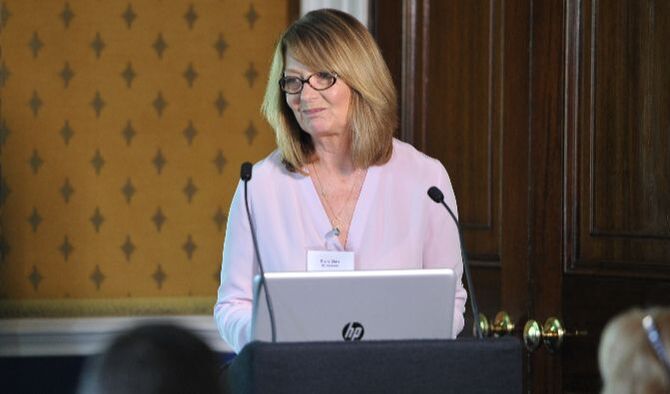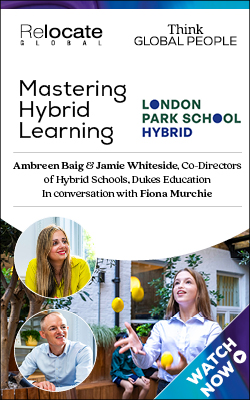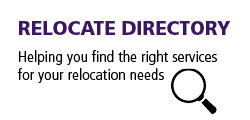Speaking at Relocate Global’s International Education Forum on 19 February, Diane Glass of International School Consultancy offered an exclusive overview of the international schools market and the phenomenal growth the sector has experienced in recent years.
There has been a massive explosion of new international schools across the world in recent years meaning that families in global transition need more help and advice than ever before when choosing a new school for their child. On the event of the launch of Relocate Global's new annual Guide to International Education and Schools, education experts and school leaders, as well as HR and relocation professionals assembled to discuss emerging education trends and tackle some of the unique issues that internationally relocating families face when selecting education options for their child.
"The international schools market has almost tripled in size since the year 2000 and I foresee this forecast will double again over the next 10 years," said Diane Glass, Business Development Director of International School Consultancy speaking to delegates at London's Institute of Director's.
There is an overwhelming number of English medium international schools, now over 8,000 across the world teaching 4.26 million students. But it was not always the case. "Thirty years ago, there were less than 1000 international schools, said Ms Glass. "The vast majority of them were not for profit; they tended to be very small schools and they taught a straightforward English or American curriculum. Today, the vast majority of schools are profit making; they teach a range of curricula and have a wide variety of learning approaches."
When it comes to curriculum choice Ms Glass outlined the huge number of options available in today's international schools, ranging from the National Curriculum of England, the US Curriculum to the Swiss International Baccalaureate. But, said Ms Glass, statistics show that it is a British derived curriculum that appears to be dominating the learning programmes of international school across the globe. "41 per cent of the world's international schools have all or part of their curriculum derived from the UK," she explained to delegates, "and, by contrast, 22 per cent offer the US curriculum and 17 per cent offer IB programmes."
A British education has long been revered the world over and given that there are a growing number of schools taking a British-style curriculum overseas the demographics within the schools are changing as a consequence. Increasingly, wealthy local families in relocation hotspots are taking advantage of the availability of these highly prized British qualifications. "Thirty years ago, most students came from expatriate families," said Ms Glass, "and whilst the numbers of students from expatriate students in international schools continues to increase, now 80 per cent of the students around the world come from wealthy, local families."
Ms Glass believes that the demand from local families for quality international education and schools is a positive development for families in global transition. "For a start, there is far more availability," she said. "There are many international schools located in most major cities around the world now, and most of the main relocation destinations. In Dubai alone there are 255 international schools. There are 21 cities around the world that have more than 100 international schools - so there is a lot of choice. More options for matching the right child with the right school."
It is important though that relocation professionals are aware of the immediate challenges facing families as a result of these demographic shifts, believes Ms Glass. "There is more competition for places, both for expatriate and for local students, and there are more schools at capacity with long waiting lists. Places like Hong Kong, for example, have big problems over demand"
With this in mind, Ms Glass spoke directly to professionals helping families place children in one of the thousands of available international schools across the world. "Meeting children's learning needs is the singular biggest challenge for parents during relocation," she said. "So, what can you do to ensure the best possible outcome for relocating families? The first thing to do is to know the schools, make sure you're fully informed of all the available international schools, not just two or three of them, in the area."
"You need to develop a relationship with the Admissions Director at the schools. You need to understand the unique offerings of the schools and know that there are regional variations and develop on-going relationships."
Diane Glass is just one of the many expert contributors to the new annual Relocate Click
Global Guide to International Education and Schools. In the Guide you will find all the latest intelligence and views from education leaders for families faced with making those crucial international education and school choices.
To order copies,
download an order form (387k) , complete it using your keyboard, and email, fax or post it to us.
To read the digital version of the
Guide to International Education & Schools, click
hereFor more Re:locate news and features on education and schools, click here
©2025 Re:locate magazine, published by Profile Locations, Spray Hill, Hastings Road, Lamberhurst, Kent TN3 8JB. All rights reserved. This publication (or any part thereof) may not be reproduced in any form without the prior written permission of Profile Locations. Profile Locations accepts no liability for the accuracy of the contents or any opinions expressed herein.











































